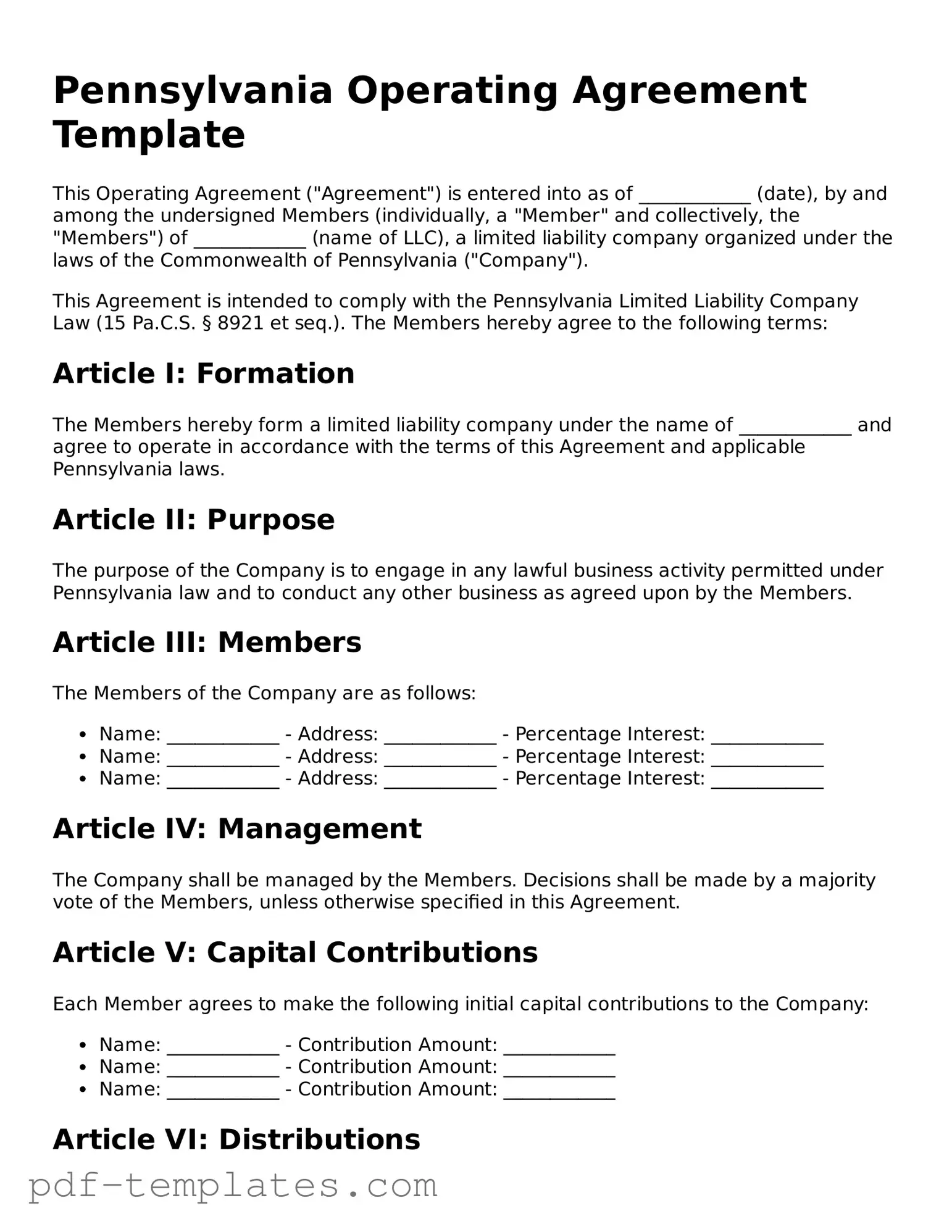The Pennsylvania Operating Agreement is similar to the Articles of Incorporation, which is essential for establishing a corporation. Both documents serve as foundational elements for a business entity. While the Operating Agreement outlines the internal workings and management of a limited liability company (LLC), the Articles of Incorporation detail the structure and purpose of a corporation. They both provide clarity on ownership and responsibilities, ensuring that all parties understand their roles within the organization.
Another document that shares similarities with the Operating Agreement is the Partnership Agreement. This document is crucial for partnerships, as it defines the relationship between partners, including their rights, responsibilities, and profit-sharing arrangements. Like the Operating Agreement, the Partnership Agreement aims to prevent disputes by clearly outlining expectations and operational procedures, fostering a cooperative business environment.
The Bylaws of a corporation also resemble the Operating Agreement. Bylaws govern the internal management of a corporation, detailing how meetings are conducted, how directors are elected, and how decisions are made. Both documents are vital for ensuring smooth operations and establishing protocols, helping to maintain order and transparency within the organization.
A Buy-Sell Agreement is another document that aligns with the principles found in an Operating Agreement. This agreement is particularly important for businesses with multiple owners, as it outlines the process for buying out a partner’s interest in the event of retirement, death, or other circumstances. Similar to the Operating Agreement, it aims to protect the interests of all parties involved and provides a clear framework for ownership transitions.
The Non-Disclosure Agreement (NDA) can also be compared to the Operating Agreement. While the Operating Agreement focuses on the management and operations of a business, an NDA protects sensitive information shared among members or partners. Both documents are essential for safeguarding the interests of the business and ensuring that proprietary information remains confidential, thus fostering trust among stakeholders.
Next, the Employment Agreement bears some similarities to the Operating Agreement. This document outlines the terms of employment for individuals within the company, detailing their roles, responsibilities, and compensation. Like the Operating Agreement, it helps to clarify expectations and reduce misunderstandings between the employer and employee, contributing to a more harmonious workplace.
The Membership Certificate is another document that parallels the Operating Agreement. In an LLC, this certificate represents ownership and membership rights. While the Operating Agreement governs the operational aspects of the LLC, the Membership Certificate serves as a formal acknowledgment of ownership, linking back to the terms set forth in the Operating Agreement regarding member rights and responsibilities.
In addition to the necessary documents for establishing a Pennsylvania LLC, it's essential to understand the implications of tax forms like the California Resale Certificate. This certificate, officially known as form CDTFA-230, allows businesses in California to purchase items without sales tax, provided those items are intended for resale. It serves as a crucial declaration by the buyer asserting their intent to resell, similar in significance to how an Operating Agreement governs relationships within an LLC. To explore more about relevant forms, you can visit All California Forms.
Lastly, the Resolution of the Board of Directors is akin to the Operating Agreement in that it records decisions made by the board regarding the management of the company. This document captures the formal actions taken by directors, similar to how the Operating Agreement outlines the operational framework for an LLC. Both documents ensure that decisions are documented and communicated effectively, promoting accountability within the organization.
